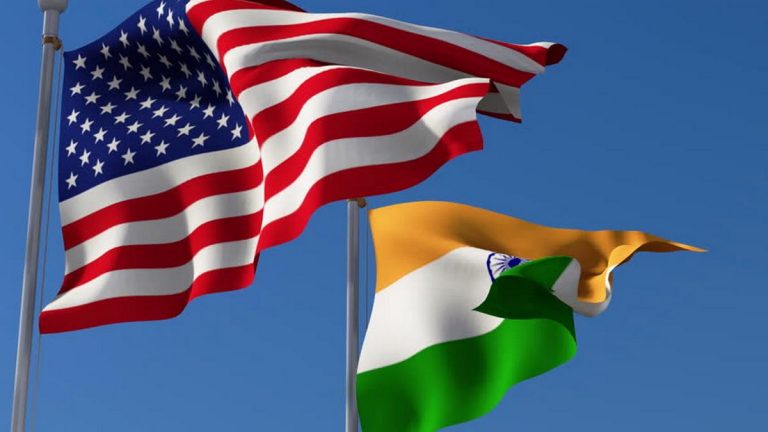
SOURCE: THE PRINT
Amid the ongoing standoff between India and China in the Ladakh sector of the Line of Actual Control (LAC), New Delhi and Washington will be holding their first virtual 2+2 format dialogue between foreign and defence ministries in September, ThePrint has learnt.
The plan to hold the 2+2 ministerial meeting through videoconferencing has been in the works since July even as tensions between New Delhi and Beijing have intensified with talks of disengagement between Indian and Chinese troops making no headway, sources said.
This round of the 2+2 talks will be led by External Affairs Minister S. Jaishankar and Defence Minister Rajnath Singh from the Indian side, while the US will be represented by Secretary of State Mike Pompeo and Defence Secretary Mark Esper.
During this round, the two sides might finally sign the last of the US’ defence foundational pacts — Basic Exchange and Cooperation Agreement (BECA). The pact will enable India to avail US expertise on geospatial intelligence and sharpen the accuracy of weapons and automated hardware systems used for military purposes.
The draft agreement on BECA was prepped and readied in March this year in Washington. But the process of finalising it got delayed due to the coronavirus pandemic, said the sources.
“The 2+2 this time will be taking place under very different circumstances. The world then when the last 2+2 meeting took place and the world now are very different places. We expect the Indo-Pacific construct and the Quad framework to strengthen further after this round of 2+2 talks, BECA is also on the agenda,” a senior official, who didn’t wish to be named, told ThePrint.
The other agreements
India and the US have already signed some of the key US foundational pacts — Logistics Exchange Memorandum of Agreement (LEMOA) and Communications Compatibility and Security Agreement (COMCASA) — to deepen defence and strategic ties.
During the last 2+2 meeting, which was held last December in Washington DC, both sides signed the Industrial Security Annex (ISA) to the India-US General Security of Military Information Agreement (GSOMIA) that eased transfer of high-level technology from the US to India and safeguarding of classified military information.
The ISA also seeks to ease participation of American defence firms in ‘Make in India’ projects via the India-US Defence Technology and Trade Initiative (DTTI) that was established in 2012.
India will be holding the talks at a time when the US is headed for a fierce presidential election in November.
“It’s certainly the right time to convene the next 2+2 session… To be sure, the upcoming US election may put a damper on the meeting, given that this may be the last time India sees the Trump administration on the other side of the table in the 2+2,” said Michael Kugelman, deputy director of the Asia Programme at the Wilson Center in Washington.
“But given the bipartisan support in Washington for US-India partnership, a potential change of power shouldn’t be concerning,” said Kugelman.
“There’s much that could be on the agenda — how to make progress on finalising BECA, the last remaining foundational agreement, what can be done with the Quad, how to scale up technology transfers and intelligence sharing, and so on,” he added.
‘LAC tensions to feature prominently’
The upcoming round of 2+2 meeting will be also taking place at a critical juncture, months after India witnessed a violent face-off with China for the first time in the last 45 years. While India lost 20 soldiers in the clash, the Xi Jinping administration didn’t reveal the Chinese casualties.
The Trump administration has called out China several times for the LAC incident in support of India. The Joe Biden camp recently said it will work with India for a rule-based Indo-Pacific and won’t allow China to threaten its neighbours.
“The China-India spat has accentuated the opportunities for, and the necessities of, deepening US-India security cooperation. The 2+2 offers a useful forum to discuss how to seize these new opportunities and how to move the needle forward on bilateral relations,” Kugelman said.
Pompeo and Esper both have criticised China for the ongoing faceoff at the LAC while US President Donald Trump has even offered to mediate between the two.
“Because of China’s aggression globally, including the LAC incident with India, there is now a sense of urgency between both sides (India and the US) to coordinate and bring in momentum in the defence partnership, by way of more procurement. And this momentum has to be built now,” said Mukesh Aghi, president and chief executive officer, US-India Strategic Partnership Forum.
“This will be the focus even for the new administration that comes in. The US now wants to align with India, and the LAC incident just accelerated that,” said Aghi.
According to sources, India is also looking at a number of arms procurement from the US even as the defence trade between the two has been steadily rising from $1 billion in 2008 to $18 billion in 2019.
India has so far procured Apache, Chinook and MH-60 Romeo Seahawk helicopters, M777 Howitzer guns, and Super Hercules C-130J military transport planes from the US, among other items. Several other procurement are also in the pipeline, with India now keen to purchase the medium-altitude long-endurance (MALE) armed Predator-B drone and other high-tech weapons.






